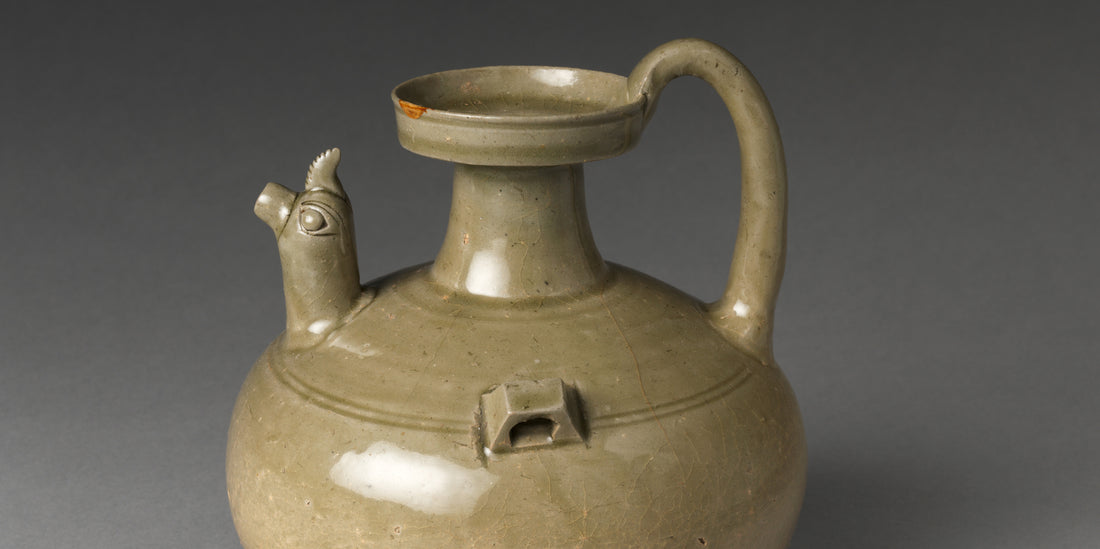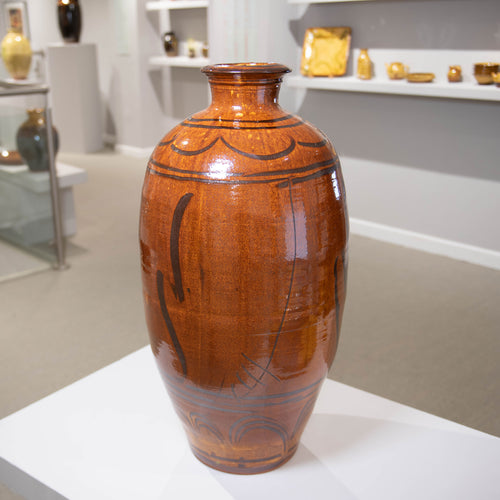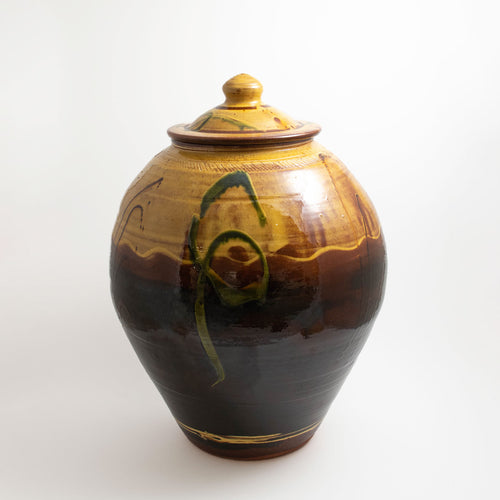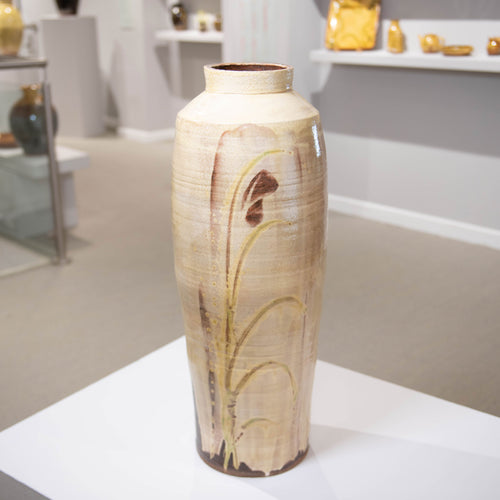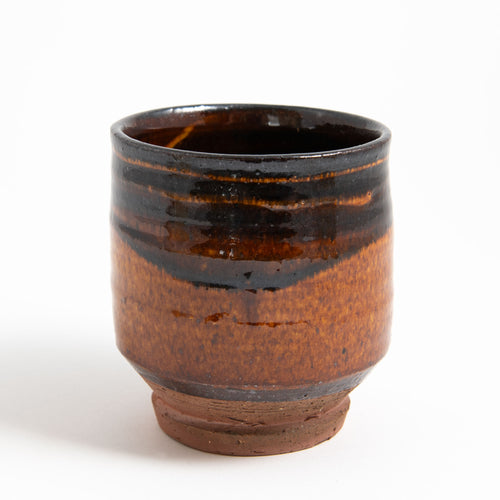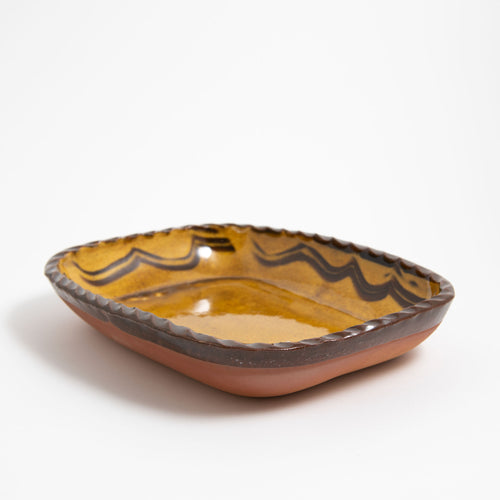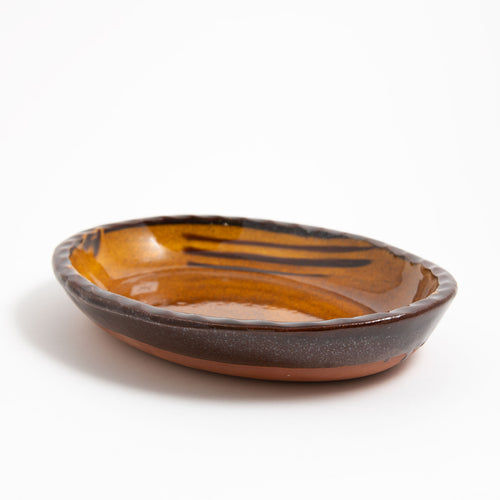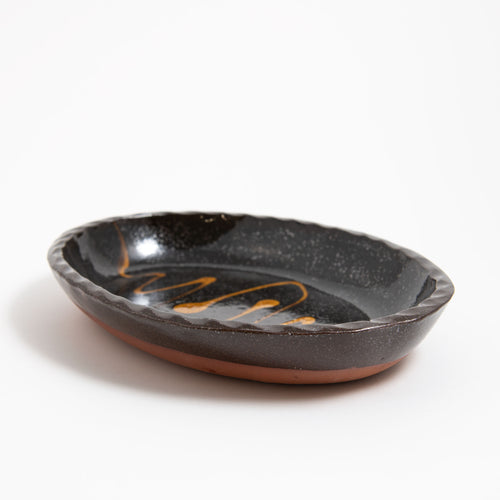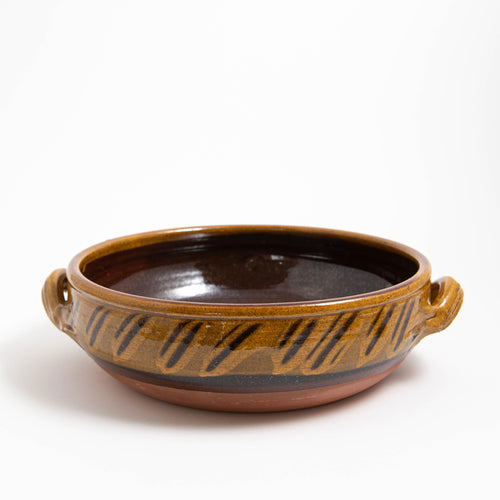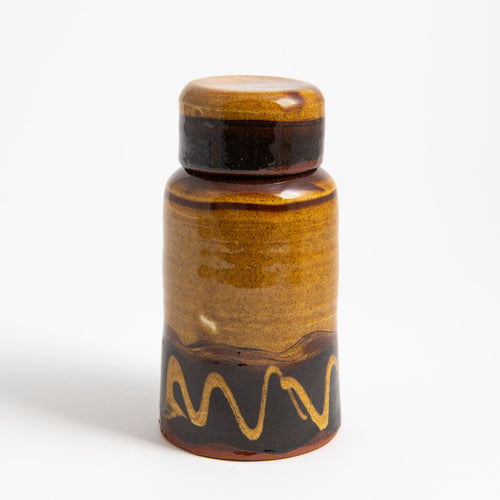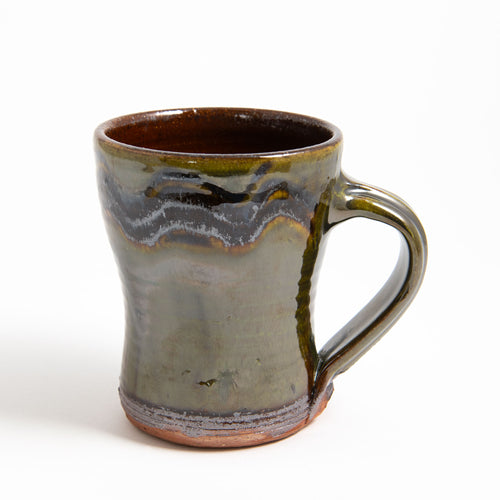What you and I know as jade could in fact be one of four or five hard stones: jadeites, nephrites and more, all essentially green in colour, but varying from the deepest blacks to the milkish ‘mutton-fat’ white that was so popular historically in China, one of very few countries where jade occurs naturally in the world. For ancient Chinese cultures, jade was the most precious of materials: a stone so rare, and so beautiful, it belonged only to its elite rulers and in its most special rituals. Jade’s hardness meant that exceptionally intricate lines could be carved in and through its surface and, in the right hands, the diamond-like material could take on an illusion of watery smoothness, its cool surface an illusion of tenderness and lifelike warmth. As the most sought after and sacred of materials, its symbolism was potent, and as endless as its breadth of colour. One stone might suggest the deepest colour of the sea, of the sky, or of grasses flecked with dew. It could symbolise life, death, and sacrifice; purity and imperial power; prayer and scholarly learning. Most of all, the ‘stone of heaven’ was a symbol of immortality. The rulers of the ancient Han dynasty (200BC-AD) tasked teams of craftsmen with constructing extraordinary coffins, burial suits, and even body plugs out of jade, all with the purpose of protecting the spirit within the bodies of dead princes and their consorts – and keeping demonic corruption out. With jade, they hoped, their lives and legacies would be eternal, and to an extent they were right: two thousand years later these jade suits have remained unblemished in excavated tombs (those that weren’t looted, at least). Only the corporeal bodies within them have rotted away.

Chicken-Headed Ewer, Yue ware, China, c.4th-5th century (The Metropolitan Museum, NY)
For hundreds of years, as China’s inter-warring populations grew, and their geopolitics became ever more complicated, the significance of jade remained a cornerstone. But in the meantime, there had been major developments elsewhere: in sumptuous bronze artistry, and in pottery too. Nobody knows exactly when, or exactly which enterprising potter first made the connection that the by-product ash in a wood fired kiln that fell, melted and glazed – by happy accident – the surface of their pots could be made into a slurry itself and applied on their wares before the fact. When they did, they stumbled across a technique that would change ceramics forever. Now their pots had a glassy surface as rich and diverse as the striated veins of a block of jade. Suddenly, with the lowliest of materials – ash, clay, and perhaps a little limestone – the highest aesthetic could be sought: the colour, the sheen, the cool, glassy touch of a ceremonial bronze or an imperial jade carving. Perhaps most attractive of all was the material paradox of this new discovery. Jade is rare, hard, expensive and unforgiving; wood is cheap, clay abundant and near limitless in its plastic possibilities.

Han Dynasty jade burial suit, c.200BC-8AD (photo Qin Ningzhen)
These earliest ash glazes, among the simplest yet most engaging in China’s long ceramic history, offered a gateway to the celebrated celadons of the Sung dynasty that have fascinated and beguiled collectors, historians, and potters ever since. More refined than their predecessors, they were nonetheless simple ash glazes at heart; but with a range of cool greenish hues they now rivalled jade hardstones more than ever. Most important of all, they seem to have arrived at a time when Chinese aesthetic culture, driven by the tastes of its courtly elites, was turning increasingly from classical symmetry and geometric pattern to the irregularities of the natural world. Painters depicted landscapes, or made drawings of wild grasses in the wind. Into the sides of jars potters carved peonies and chrysanthemums in abundance, not hieratic zig-zags, and formed plates of five and seven sides, imitating the natural mathematics of the heads of flowers. To the art historian Herbert Read, the best of the Chinese Sung dynasty pots sang with a ‘dynamic harmony’ that surpassed the ‘static’ beauty of ancient Greek vases. Here were vessels that embodied ‘not only a relation of numbers, but also a living movement. Not a crystal but a flower.’
Beano and Norah
The history of ash glazing, in all its complexity and quirks of circumstance, is detailed in Phil Rogers’ new (posthumous) edition of his seminal Ash Glazes, published earlier this year by the Herbert Press. For years Rogers’ sell-out book has served as textbook-cum-bible to students of studio pottery, and there had long been plans for a third edition before his untimely death in December 2020. It was his own discovery of Bernard Leach’s A Potter’s Book, published first in 1940, that helped guide Phil as a young potter eager to learn more about his craft, pointing him to a world beyond the three buckets of ‘obligatory oatmeal, tenmoku and brown of indeterminate origin’ that were the only choice of glaze on his student course. Leach’s book emphasised, through its championing of the historical pottery of China and Korea, that a potter should work with the resources of their immediate surroundings. ‘It came as something of a revelation to me,’ Phil remembered, ‘that the world, it seemed, had been created with potters in mind.’

Phil Rogers, Large Bowl, Impressed flower. Ash glaze with Nuka pours, 2020
The location of and access to clays and mineral stones would always prove a limitation to potters in this country, but woodlands, shrubs and surrounding hedgerows are ubiquitous, presenting a rich diversity of vegetation that might serve as both fuel and glaze ingredient. One of Leach’s pupils, Katharine Pleydell-Bouverie, made it her life’s task to explore the extraordinary breadth our countryside had to offer. Her interest in pottery had first been piqued by the rudimentary wares sold at Roger Fry’s Omega Workshops. She enlisted in evening classes at the Central School of Arts under the tutelage of Dora Billington, before meeting Leach, by chance, at a London exhibition. He invited her to take on a role as ‘odd-job boy’, and for a year she was tasked with helping in the peripheral tasks of Leach’s pottery in St Ives. It was here that she met her lifelong friend and collaborator Norah Braden, and the Japanese kiln builder Tsurunosuke Matsubayashi (‘Matsu’ for short). After her year’s apprenticeship, and with Leach’s enjoinder to explore her surroundings still in her ears, ‘Beano’ (as she was known to friends) set up her own workshop on the family’s 17thcentury estate at Coleshill in Berkshire. Matsu was invited to help build a two-chambered wood kiln, and in 1928 Norah joined her, working close by her side for several years before leaving to care for her ailing mother.

Katharine Pleydell-Bouverie ash glazed pots from the collection of W.A. Ismay (York Museums Trust)
The premise behind the Cole Pottery was simple: to investigate every tree, grass, shrub, weed and vine that could be found on the estate and find out the properties of their ash in glazing. No other potter in the last hundred years has likely experimented with so many different species: roses and laurels, hawthorn and laurustinus, pines, oaks, elms, holly, walnut, apple, privet, honeysuckle, vines and nettles, grasses and reeds. They provided her with range of colours, textures and behaviours, from thick, glutinous, bluish whites to warm greys, dark treacle browns to bronze greens, dry, pale sage to light apple green.

Katharine Pleydell-Bouverie (left) and Norah Braden (right) at Coleshill House, 1929, Crafts Study Centre, University for the Creative Arts
Pleydell-Bouverie’s aristocratic background meant she was in little need of the living she made from her pots, with the result that they have absolutely nothing to prove. There is no greater embellishment, no fritter to be found in their decoration. Partly informed by the modernist philosophy she had seen at Omega, partly by the Leach school’s cultural inheritance from the East, most of all her pots reflected her simple daily living in the environment of her garden estate. Fluted bottles, vases and bowls mimic pine cones, berries, segmented flower forms. Rather tellingly, she wrote to Leach that she wanted her pots not to make people think ‘not of the Chinese, but of things like pebbles and shells and birds’ eggs and the stones over which moss grows.’ Inspired by the creative and aesthetic bravery of Sung dynasty China, she would write a new chapter the history of ash glazing from the corner of an English garden.
A Wagonload of Analyses
At 1170˚ wood ash melts, reacting with alumina and silica within the clay of a pot to form a glass. This was the magic temperature, the alchemical moment that Chinese potters of the past had discovered: the point at which ash will run, seeking out crevices, cracks, gaps, holes, facet lines, edges on a pot’s surface, discovering its form as it melts around it. As it cools and hardens, the once-runny glaze gains the revelatory power of water on stone, darkening the surface of the vitrified pot so that it reveals its muted pits and holes, as when the dry, misted surface of a pebble is wettened and suddenly glistens black. Its beauty, as in jade, is how it moves from one register to the other, light to dark. An ash glaze, in its rudest form, is often described as ‘olive green’ in colour, but we’d do better to look at the leaves of the tree, not the fruit, for comparison. Where the glaze is thinner, it cools to a dusty matt surface, like the underside of an olive leaf. At its thickest, it is dark and glassy, like the leaf’s top side: glossy, smooth to the touch and deep in colour. For Mike Dodd, Phil Rogers’ fellow potter and author of Ash Glazes’ new foreword, this dual nature lies at the heart of ash’s beauty. ‘At its best,’ he writes, ‘an ash glaze has a depth and a vibrancy by the creation of a floating mattness and transparency at the same time on the same piece.’ The best, he maintains, show a ‘vulnerability, softness, sensuousness’ that derives from ash’s natural chemical complexity. Pleydell-Bouverie was among the first in this country to record – in meticulous detail – the variation one might find from one wood type to another. Trialling each in her garden estate, her list of findings were published in Leach’s 1940 book, laying the ground for future generations of ash glaze technicians:
• Oak, beech, elm, thorn, box, hornbeam, holly, laurustinus, rose. These tend to produce a fat, smooth glaze, pale bluish or greenish in colour and usually heavily crackled. • Spruce, maple, lime, ivy, ash, elder, larch, laburnum, horse-chestnut. These produce a matt surface, varying in colour between a creamish grey and greyish blue and usually uncrackled. • Yew, walnut, cedar. Very matt, almost rough; greyish in colour or almost white in the case of walnut. • Scotch pine, peat, blackcurrant. Oily texture, greyish or olive, rather darker than the others. • Grass, reeds, nettles, lavender. White or very pale grey, rather sugary in texture and heavily crackled if used thick.

Mike Dodd, Dumpy Vase, peat clay and ash glaze over crackle slip with nuka top
As one might have expected, almost anything, from the way the tree was grown, what it was fed, when it was harvested, how it was burnt, even the fumes and smoke given off during the firing, can effect the final result. Sensitive to contact with clays and slips, an ash glaze can turn dark brown or red when introduced to iron; in oxidation it might yellow. Trying to pin down the chemical constitution of every new batch of wood ash was, Pleydell-Bouverie assured her readers, a fool’s errand. ‘Curiosity, and a resilient attitude towards unpleasant shocks,’ she wrote, ‘are of more use in the making of glazes than a wagonload of analyses.’

Richard Batterham, Tall Bottle, fluted, ash glaze
The key, with such a complex ingredient, is to keep things simple: Richard Batterham’s ash glazes, some of Mike Dodd’s favourites, were as simple as they come, a combination of just clay and ash that somehow seemed to ‘float on the surface of the pot.’ And the best to exploit an ash glaze’s nature – like Dodd, Batterham and Pleydell-Bouverie before them – have always excelled in faceting, fluting and incising their clay, giving the glaze the variegated surface it hungers to explore.
Cricket Bats and Computer Prints
It was under the tutelage of Donald Potter, teacher of pottery, sculpture, pioneering and more at Bryanston School, that Mike Dodd was first introduced to Katharine Pleydell-Bouverie’s pots (Richard Batterham, an ex-Bryanston pupil, had enjoyed the same privilege a few years before). Potter taught partly by silent example, leaving works by the greats of the Leach school around the school workshop for pupils to handle and admire. With his connections to pre-war cliques of artists and artisans, outings to visit local potters were frequent, and Pleydell-Bouverie was an accommodating host (Batterham remembers her ‘incisive, commonsense mind’ and ‘lovely, slightly impish, full-flowering smile’). By then Pleydell-Bouverie had moved from Coleshill, which had to be shut down during the war. From 1946 she worked at Kilmington Manor, near Warminster in Wiltshire, having traded in her wood kiln for a temperamental oil burner and, eventually, as old age caught up with her industrial spirit, an electric kiln (a ‘good servant’ that never quite matched the wood kiln’s role of ‘inspired partner’). Mike remembers walking through her home, admiring Tang dynasty animal figurines on the mantelpiece and the Sung vases that littered her house, propping open doors. The house was a horde of pots – her own, and many others’. But the real treasure lay in a cupboard under the stairs: among a great many pots, a beautiful, hawthorn ash glaze bowl, fatty and blue

Mike Dodd, exhibition pots ready to be boxed and shipped
When Mike set out on his own several years later, it was with this kind of bowl in mind. Having sourced a batch of used oak wood from a smoked salmon farm, he followed the steps laid down in Leach’s book for preparing the ash. The oak was burned on a clean hearth, to prevent contamination with iron-bearing soil. Once cool, a dustbin was filled half with ash, half with water and left for a week, until the mixture had become thick, grey, bubbly and brackish. ‘I immediately started mixing and sieving the water by hand until after a while it started to tingle,’ Mike remembers. ‘When I pulled my hand out, it was completely red: I was bleeding from every pore. The ash water had become highly alkali – I was essentially washing my hands in pure lye!’

Mike Dodd, Small Squared Dish, Incised. Peat clay & ash glaze
It was an educational start to what has developed into a lifelong investigation into not just wood ash but a vast wealth of locally sourced minerals, clays and rocks, each one intimately tied to a chapter in Mike’s past. In the depths of the South American jungle, for example, where the trees are rich in phosphates, Mike made pots with an ash glaze of delicate blue. ‘I’ve only had a glaze like that a few times in England,’ he says. ‘I was sent a load of pea straw ash from a friend in the northeast that was not dissimilar. Willow offcuts from a cricket bat factory gave me a lovely light blue that I now use very rarely, as it’s in short supply. But one day I had a call from a lady at the local post office, which was surrounded by Corsican pines. The needles were clogging their gutters and the trees casting shade across the building, so they had the lower branches ‘brashed’. They had called to ask if I wanted any – and lo and behold, they gave me that beautiful blue again.’
These ties between ingredients and personal history are a recurring refrain in Phil Rogers’ Ash Glazes book. Of past students and collaborators, potters often wrote back to report their own finds: the French potter who made good use of viticultural prunings; or the Maltese potters who adapted prickly pears growing by the wayside, or who used the ash from a fellow potter’s kiln, itself fuelled with discarded computer documents from the Maltese government, dumped by the lorry load to be disposed of by way of fire. Ash glazes have always been more than simply their colour: like jade, they have become a vehicle for information, symbolism, and meaning, both individual and historical. For the Japanese potter Akiko Hirai, whose career has unusually taken shape exclusively in the UK, wood ash is intimately tied to her time as a potter: ‘It probably comes from my nationality, and religious ‘Animism’, the idea that things have personality and soul. I don’t believe in that way, but aging does do something to us. We all grow with age, and not just in one generation, but from an older kind of past. When I use wood ash, I’m taking mineral from the grounds, that grew into a tree, and now becomes ash again. And this ash contains all that information – when the tree was grown, what was in the soil, what’s happened to it over the course of its life. It carries an element of all these – of the past in the present.’
